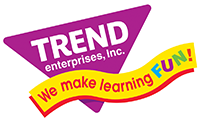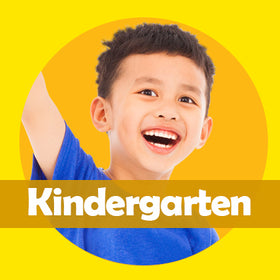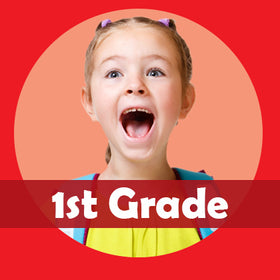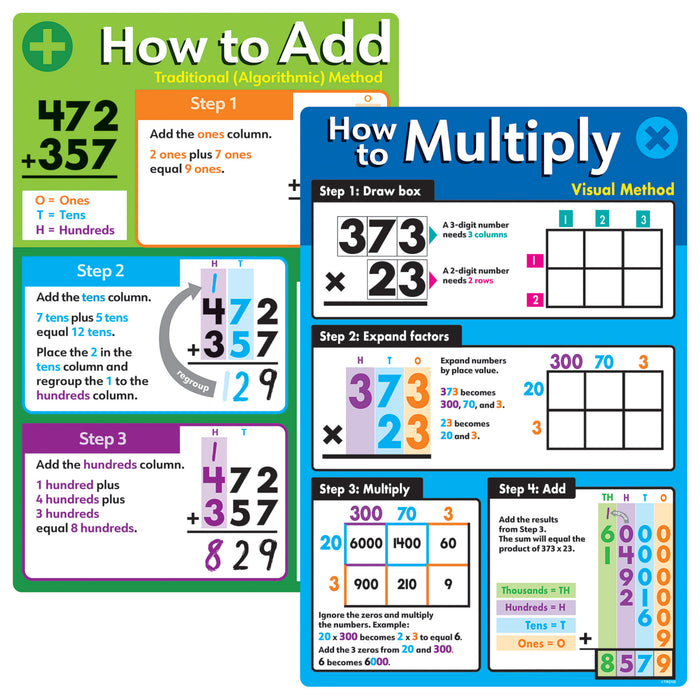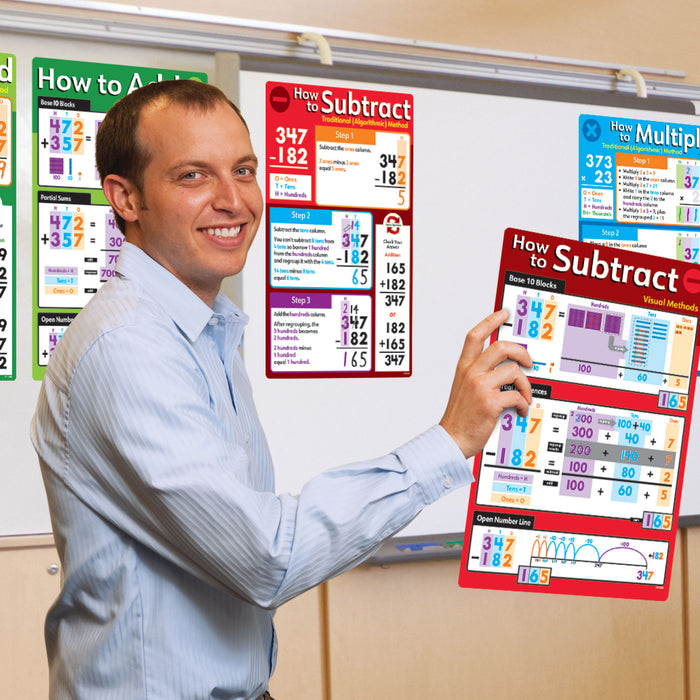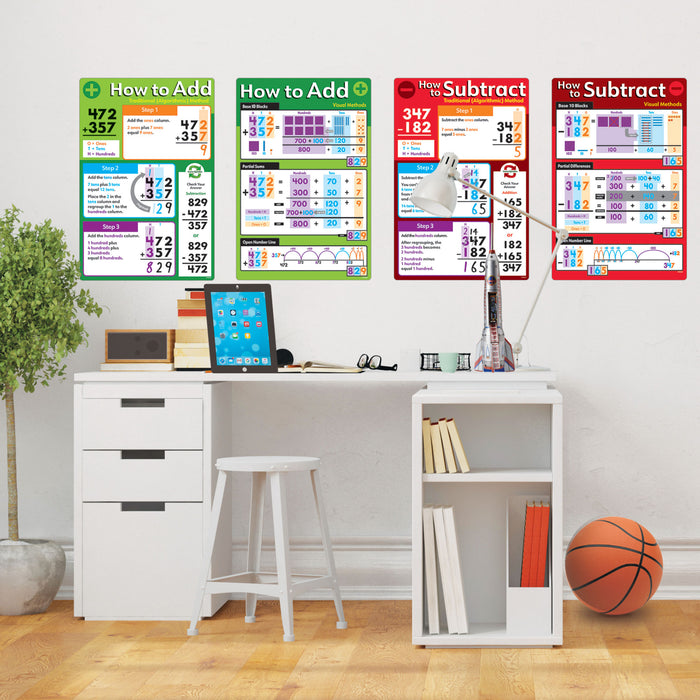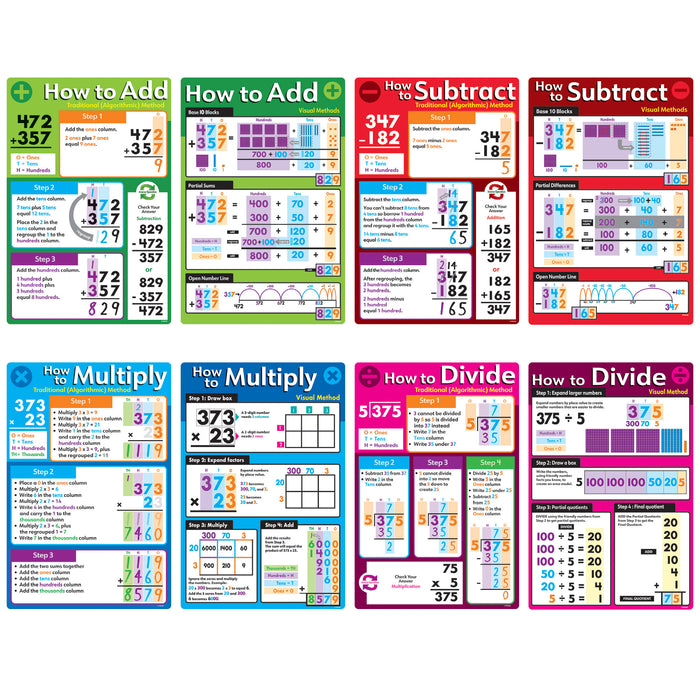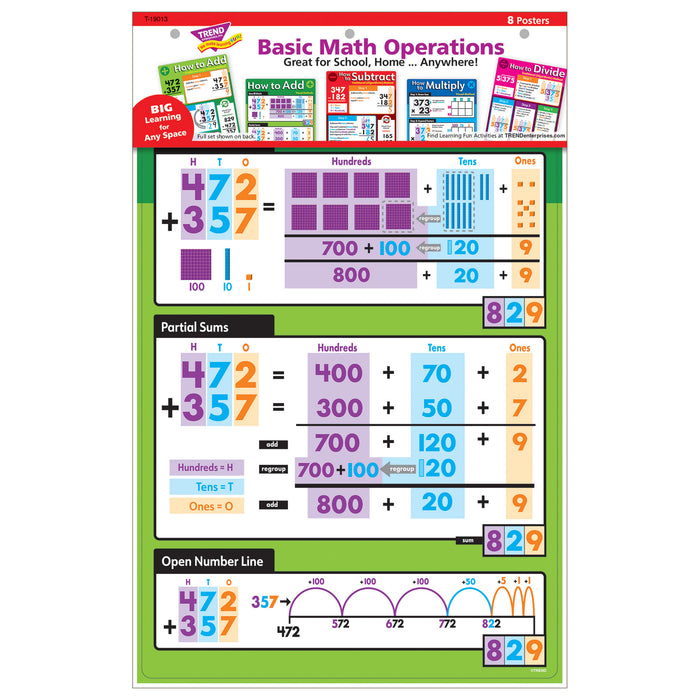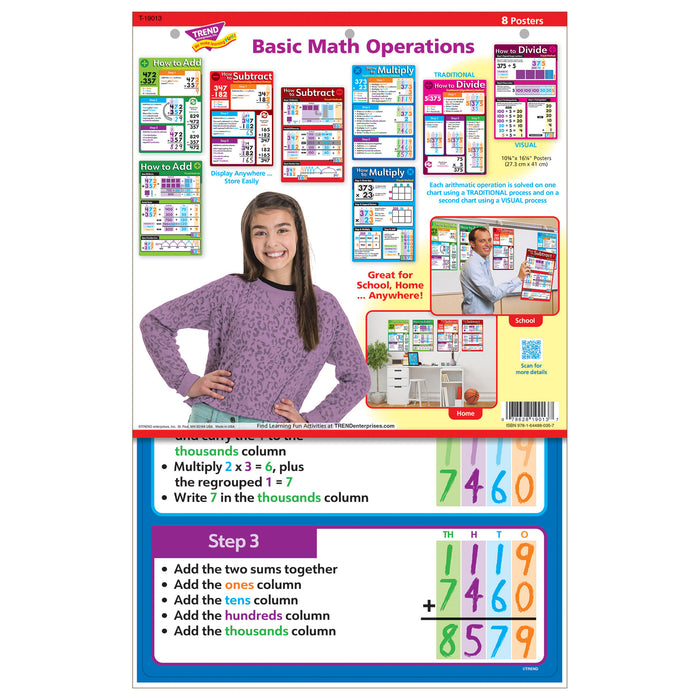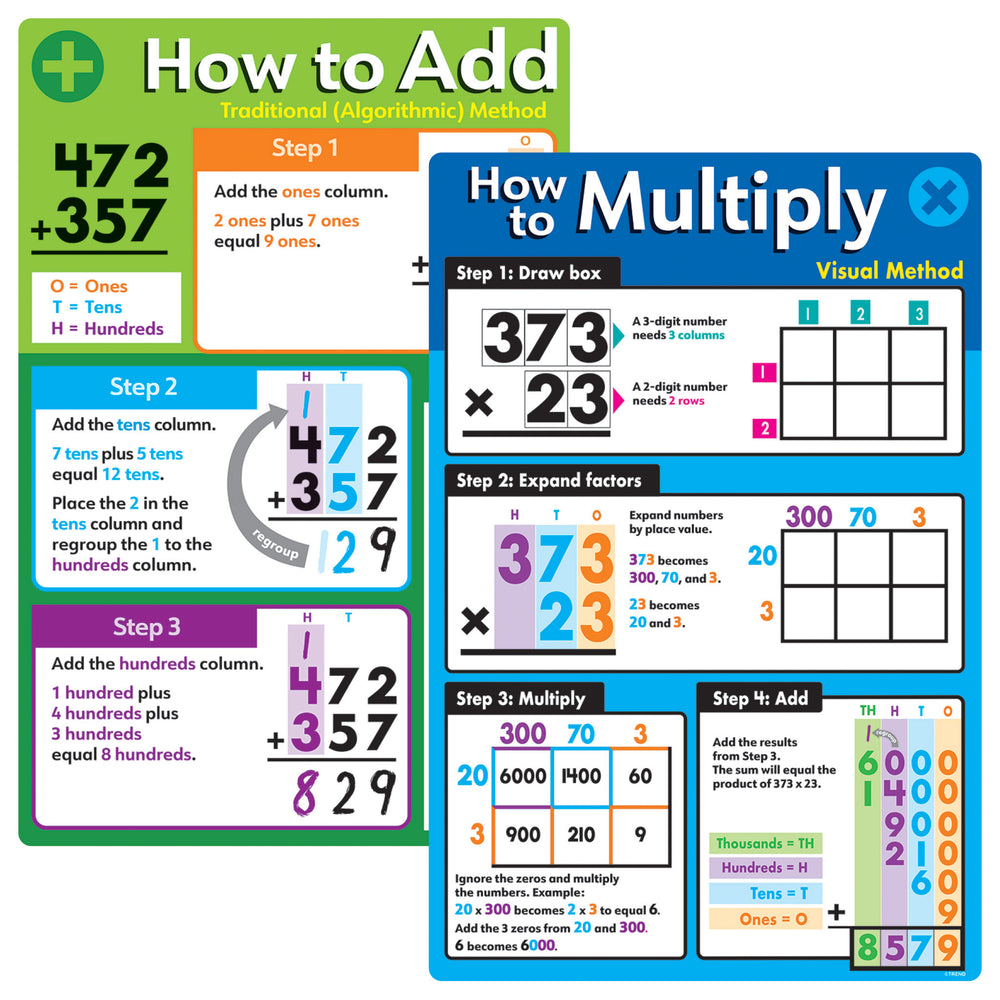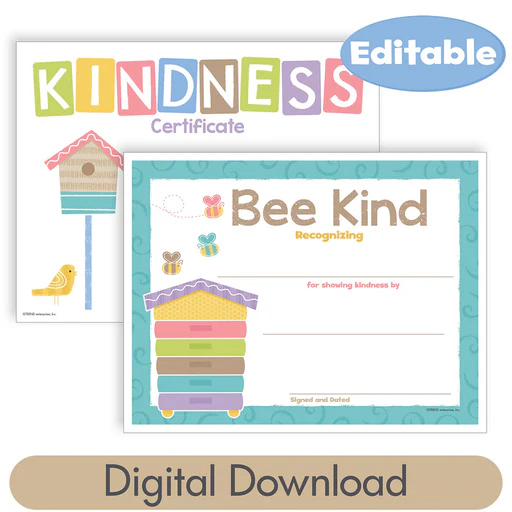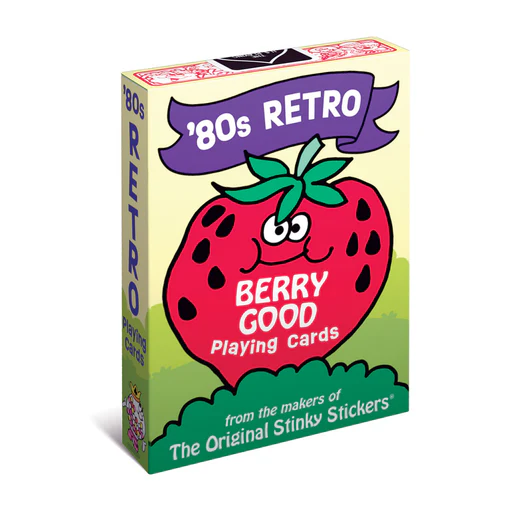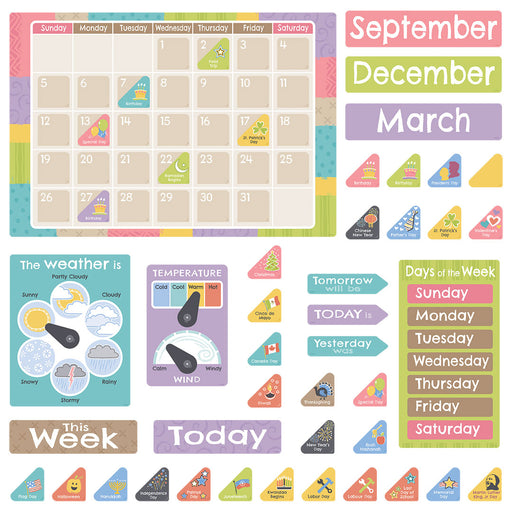Basic Math Operations Learning Set
Learning Set
There's more than one way to solve a problem! Introduce and practice adding, subtracting, multiplying, and dividing with these 8 fundamental posters. They're helpful additions to classrooms, learning centers, and home study areas.
The Basic Math Operations Learning Set includes 8 posters: two each for Addition, Subtraction, Multiplication, and Division. Each operation has a poster featuring traditional (algorithmic) math methods as well as a poster illustrating visual math strategies. Encourage learners to explore, practice, and master each of these basic math functions. View the Learning FUN Ideas in the tab below to get you started!
-
BIG LEARNING ... ANYWHERE – Easily arrange Basic Math Operations charts one at a time, in groups, or all together to match any space and learning goal. Introduce addition, subtraction, multiplication, and division using traditional algorithmic and visual methods with these math posters, and help learners see that there are multiple ways to solve math problems.
-
MANY BRAINY BENEFITS – With examples of a variety of math strategies, the Basic Math Operations Learning Set provides you with a valuable tool for introducing basic math operations for hands-on and visual learners. Help learners look at a problem several ways to improve understanding of these math concepts and improve their skills and confidence. Illustrations help kids solve problems, with step by step visualizations to get them started. The helpful information on these posters reinforces each math operation in a visual style that's for appropriate for a variety of ages.
-
HANDS-ON LEARNING FUN – Posters are sturdy and sized right to reinforce interactive activities for class-wide, small-group, and individualized learning. Use these posters and the ideas in the tab below to get started having fun while learning math. For further practice and assessment FUN, get TREND Pocket Flash Cards, Skill Drill Flash Cards, and Bingo Games.
-
EASY STORAGE – Use posters individually or as a set. It's easy to store extras back in the bag. It reseals to keep your set organized and ready anytime. The posters are just over 16 inches, so they won't need specialized storage.
-
SET INCLUDES – 8 posters, 10¾ inches x 16⅛ inches each.
-
MADE IN USA – All TREND Learning Sets are quality-tested to meet product safety standards and proudly made in the USA.
Specifications
- Durable, reusable paper
- Package reseals for easy storage
- 8 posters, 10¾ inches x 16⅛ inches each
- Made in USA
Learning FUN Ideas
It all adds up to FUN with these activity ideas:
-
How Much Do I Need? Help learners see the relevance of multiplication when figuring areas. You want to paint a wall? What area do you need to cover? Figure the area (length x height), using the Multiplication posters in this set as reference for how to multiply. 8 feet x 10 feet = 96 square feet!
-
How much? How many? Jump start putting math into practice with the these additional ideas.
- How much gas do we need to get to Grandma's house 100 miles away if we drive 25 miles on one gallon? [100 / 25 = 4]
- How many eggs do I need if I want to double the recipe? / How many cookies can I make if I double the recipe?
- How many $0.50 cups of lemonade do I need to sell to reach my goal of raising $50?
- How many chickens does it take to lay 12 dozen eggs, if each chicken lays two eggs?
- If I buy a gift, how much do I have left? Do I have enough money to buy...?
- How long will it take to travel to the moon?
- How much gas do we need to get to Grandma's house 100 miles away if we drive 25 miles on one gallon? [100 / 25 = 4]
-
Are We There Yet? With math and some basic information, kids can figure how long it will take until you're "there"! First, note the distance you need to travel. It could be biking two miles to a friend's, walking 800 meters around the track, or taking a drive 70 miles to grandma's house. Then, estimate your speed: 6 minutes to bike a mile, for example. Finally calculate the time total travel time: 6 minutes per mile times 2 miles = 12 minutes to bike to a friend's two miles away.
-
Birthday Math – Did you know that about 10 million people in the world share your birthday? Use basic math skills with this fun birthday trick:
- Have participants write down the number for their birth month. For example, January is 1, February as 2, and so on. In this example, we'll use the month of May = 5, and date = 31.
- Add the number for the month and the next highest number together: 5 + 6 = 11.
- Multiply the sum by 5: 11 x 5 = 55
- Next, multiply the sum by 10: 55 x 10 = 550
- Add their date of birth: 550 + 31 = 581
- Subtract 50, and you will have the student's date of birth: 531 (5/31 or May 31st)
